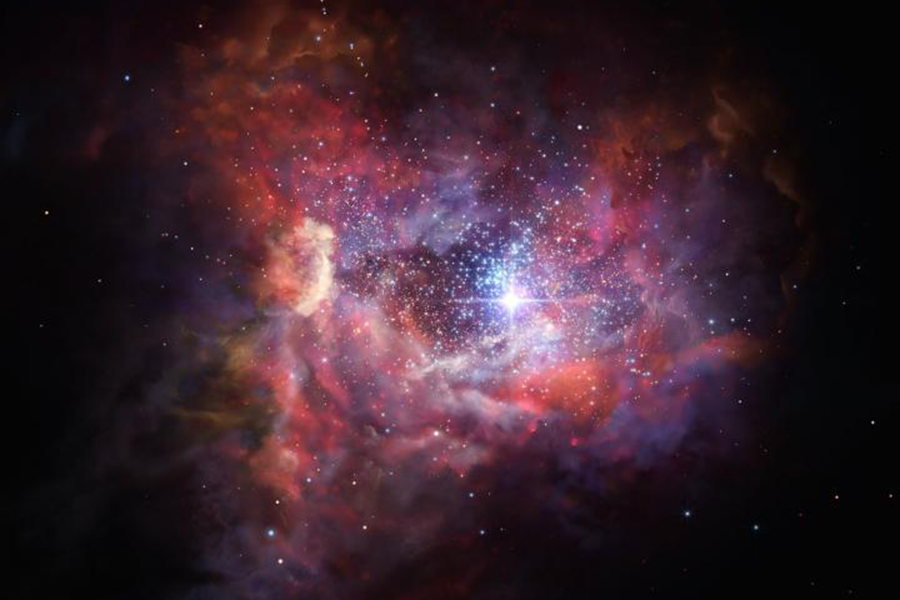Cosmic dust opens window into dawn of the universe
Loading...
On bookshelves and TV screens, dust is an annoyance. But as vast clouds in deep space, it has major potential.
Almost all of the elements around us today – from the oxygen in the atmosphere to the nitrogen in human DNA to the uranium in power plants – were forged within stars and then scattered by supernovae before clumping into other stars, planets, and, ultimately, human beings.
Now, researchers have observed this process taking place during the universe’s extreme infancy, in a galaxy called A2744_YD4, using the Atacama Large Millimeter Array (ALMA) and the Very Large Telescope (VLT), both in northern Chile.
“The galaxy appears to us as it was when the Universe was only 600 million years old, during the period when the first stars and galaxies were forming,” said the European Southern Observatory, which operates the VLT and is one of the partners in ALMA, in a press release.
A2744_YD4’s age makes it one of the earliest fragments of the universe.
Stars and galaxies didn’t spring fully formed out of the Big Bang. The early universe was a hot, opaque cloud of protons, neutrons, and electrons. After about 380,000 years, the particles cooled enough to form atomic nuclei. Once those nuclei attracted atoms, they were no longer charged. The effect was like switching off a neon light: Visible light could pass through the universe.
Except there was no light to be had. It took about 400 million years for atoms to clump together into stars, whose nuclear fusion could light up the universe.
One of the first places that happened was in galaxy A2744_YD4.
The galaxy took only about 200 million years to reach its observed form, explained one of the paper’s co-authors, Professor Richard Ellis, in a University College-London statement, "so we are witnessing this galaxy shortly after its formation."
Then, the light from that galaxy took 13.2 billion years – 96 percent of the universe’s total age – to reach Earth, he said.
Observing objects this distant is far from easy – especially when they’re fine grains of low-temperature dust, emitting light at long, invisible wavelengths. But in the early 2010s, the completion of ALMA’s 66 radio antennas gave scientists a powerful new tool to study these dust clouds.
The radio telescope first picked up the galaxy in July 2016. The researchers conducted follow-up observations with the Very Large Telescope’s X-shooter instrument, which splits light apart into its different wavelengths.
Together, these two instruments have revealed a chaotic, messy young galaxy. Stars were forming there at a rate of 20 solar masses per year – compared with one star a year in the current Milky Way.
The next steps, researchers say, are to focus in on the composition of these dust clouds and their early stars, gaining a better sense of when these stars began to produce the heavy elements all around us. Next-generation instruments like ALMA and the James Webb Space Telescope will enable them to do so.
“Further measurements of this kind,” said the study’s lead author, Nicholas Laporte, “offer the exciting prospect of tracing early star formation and the creation of the heavier chemical elements even further back into the early universe.”








